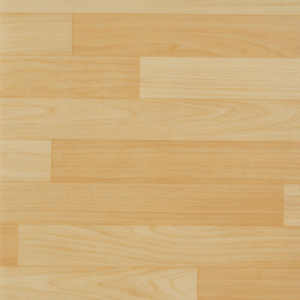Rolled vinyl flooring is often seen as an attractive choice for sports flooring among many architects. Although it appears frequently in specifications, our experience across hundreds of clubs shows it’s rarely implemented. Yet, in many public facilities, its use is almost invariably recommended.
Rolled vinyl features a dense vinyl top layer with simulated wood planks or solid colors, bonded to a softer foam layer that enhances shock absorption. The material is supplied in wide rolls, cut and installed on-site, with the sheets heat-welded together to achieve a nearly seamless finish. The underpadding varies in thickness to meet different needs—thinner for sports like basketball that require good ball bounce, and thicker for activities such as group exercise that benefit from greater shock absorption.
The primary challenge lies in the installation process, particularly the heat welding of seams. Only a skilled installer can achieve the seamless look that ensures long-lasting performance. Poorly welded seams can be unsightly and prone to separation over time.

We have no issue with rolled vinyl floors in performance. In fact, they are great floors for areas where the humidity simply cannot be controlled or where there is regular exposure to moisture. We’ve even sold a few of them ourselves. However, it’s not something we feature, because the installation component must be absolutely perfect.
Our main argument against rolled vinyl is its expense. Sure, the material is cheaper than a wood floor, but when you add in the installation factor, it’s actually not. Therefore, it’s hard to see the value of a rolled vinyl floor, when for about the same price, we can supply the genuine wood floor that rolled vinyl is trying to mimic.
Additionally, a wood floor can be sanded and refinished after many years of use, whereas a rolled vinyl must be ripped out and reinstalled. Rips in rolled vinyl often occur over time and are expensive to repair.
At the end of the day, we’re not opposed to rolled vinyl floors, and if they were considerably cheaper than wood, we’d like to offer them more regularly. We’re always looking for alternatives.
This one just doesn’t seem to be all that viable – despite what many architects seem to believe.

2 thoughts on “Rolled Vinyl Flooring: Practicality and Performance in Sports Facilities”
Is Vinyl what is used on most basketball courts?
Actually, most basketball courts are wood – typically maple. Many vinyl manufacturers do make a vinyl surface that mimics wood though.
Comments are closed.